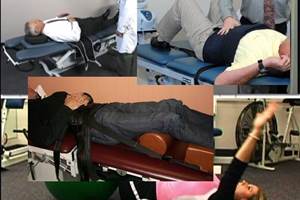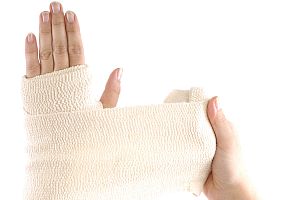Neck Pain Wilmington NC: Chiro and Massage
Chiropractic physicians are experts in diagnosing and treating disorders that affect the musculoskeletal and nervous systems. They are specially trained to identify and correct structural misalignment and imbalances in the back, neck and joints that can cause a variety of health problems. The techniques that chiropractors use to accomplish this are typically referred to as adjustments, manipulation or mobilization. Our neck pain Wilmington NC specialist explains more.
Depending on the situation, it may also be necessary or useful for patients to receive therapeutic massage—either before or after a chiropractic adjustment—as part of a well-designed treatment plan. This is because the body’s bones are surrounded by soft tissues—muscles, tendons, ligaments and cartilage—that can contribute to pain and loss of function and that can also make chiropractic adjustments more difficult and less effective under some circumstances. Massage therapy can often be helpful in accelerating the body’s healing processes and in relaxing tight muscles. Our neck pain Wilmington NC chiropractor offers massage.
In the simplest terms, chiropractors work with bones and massage therapists work with soft tissues. But as treatment modalities, they are compatible and complementary. This combination of treatments often produces a more comfortable patient experience as well as superior results. Massage is often recommended as a preparation for a chiropractic adjustment because it relieves the muscle tension that may be pulling joints out of alignment and makes it easier to move them back into place. Massage is also relaxing, and a relaxed body is easier for the chiropractor to work with. In addition, as the chiropractor corrects the structural problems that are causing pain or limiting your mobility, massage can complement the healing process by stretching and relaxing muscles that have been aggravated by these structural problems, making it easier for you to stretch and exercise, and thus more quickly achieve a state of normal well-being.
Many chiropractors work hand-in-hand with massage therapists because their treatment modalities are so complementary. Patients who are working with massage therapists to address soft tissue problems but find that their symptoms persist are frequently referred to chiropractic physicians for further diagnosis and treatment. At the same time, chiropractic patients usually find that their treatment proceeds faster and with less discomfort when the soft tissue has been relaxed with massage. Recovery—especially from musculoskeletal conditions that cause pain and limit mobility—is normally faster and more complete when the underlying causes are addressed holistically, with the chiropractor working to resolve the structural problems and the massage therapist working to resolve the soft tissue problems. Chiropractors and massage therapists who work together collaborate to find the proper combination of chiropractic adjustments and massage to achieve your health and wellness goals as quickly as possible.
Chiropractic and massage therapy are holistic treatment modalities that share a common goal of treating the whole body, helping you to achieve a state of optimal health and well-being without resorting to drugs or surgery. Both focus on trying to resolve the underlying cause of your pain or discomfort rather than simply treating isolated symptoms. Used together, they can be a powerful combination!
If you or someone you care about is suffering from musculoskeletal problems, we encourage you to call or visit our office today. Our neck pain Wilmington NC specialist is always happy to discuss our overall approach as well as the treatment options we provide.










